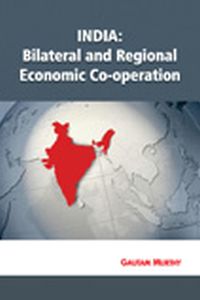
Contents: 1. South-South Cooperation. 2. India’s Look East Policy. 3. India and Association of Southeast Asian Nations (ASEAN).
4. India and South Asian Association for Regional Cooperation (SAARC). 5. India and Asia-Pacific Economic Co-operation (APEC) Forum.
6. India and Indian Ocean Rim Association (IORA). 7. India and the European Union (EU). 8. Sino-Indian Economic Relations.
. 9. Indo-Australian Economic Co-operation. 10. India-Singapore Comprehensive Economic Partnership.
11. India’s Regional Trade Agreements (RTAs). 12. Uruguay Round of Multilateral Trade Negotiations and India.
13. India and World Trade Organization (WTO). 14. Globalization and India. Bibliography. Index.
Prior to economic reforms process initiated in 1991, India had adopted a very cautious and guarded approach to regional economic co-operation with countries in the neighbourhood. Recognising that regional economic co-operation would continue to feature prominently in world trade, India engaged with its trading partners/blocks with the intention of expanding its export market and began concluding regional trade agreements (RTAs). Framework agreements have already been entered into with a number of trading partners with specific road maps to be followed and specified time frames by which the negotiations are to be completed.
India unveiled the Look East policy in 1991. East Asia¾including Japan, China, South Korea and ASEAN¾is today India’s largest trading partner, ahead of European Union (EU) and the US. Proliferation of Free Trade Agreements (FTAs) is the clearest evidence of Asian countries’ desire to forge closer economic relationships.
RTAs in the world are characterized as the spaghetti bowl in which trade criss-crosses in a complex fashion between countries based on tariff differentials and complicated rules of origin. In recent years, India too is a part of many regional and bilateral groupings.
Since early 1990s, world economies have witnessed a paradigm shift towards market-oriented economic policies and a careful dismantling of obstacles in international trade. This has helped the smaller, emerging economies gain access to world markets, modern technologies and collaborations. This has also given them a window to the developed world and helped them understand the significant role of globalization as an instrument, which could be utilised not just to achieve economic efficiency, but also to eradicate poverty.
This book is a timely addition to the existing body of literature on India’s economic and trade relations with different countries of the world.